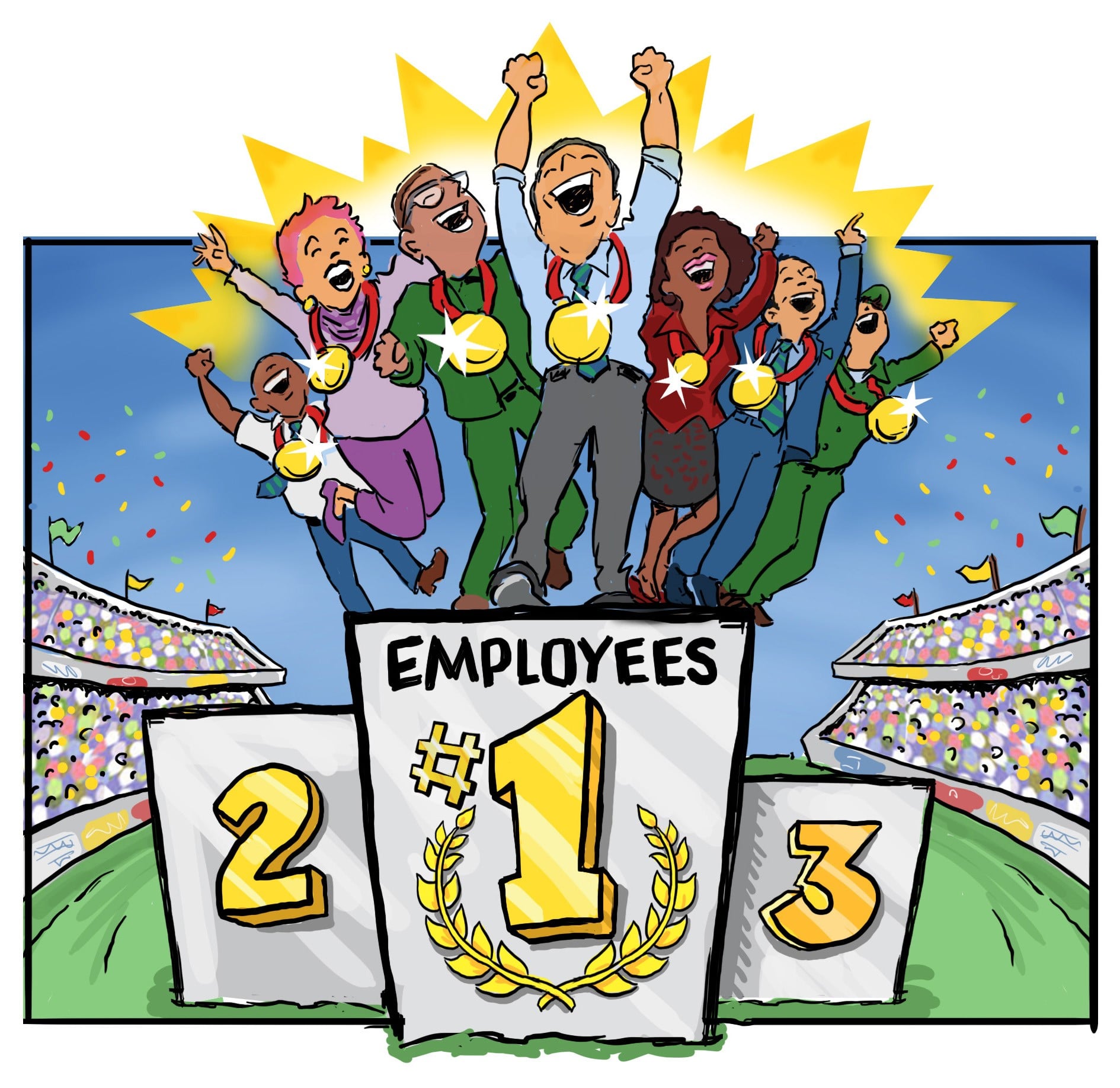What if every executive gave up this year’s annual bonus and shares to help keep their people employed?
Iconic entrepreneur Richard Branson made headlines this week with the announcement of a $250 million package aimed at saving his employees. With major revenue streams coming from air travel, cruise lines, hotels, travel bookings, and aligned industries, Branson’s Virgin Group and its 70,000 global employees have already been greatly affected by the chaos caused by the coronavirus.
To stop the bleeding, Branson unveiled his plan to save his businesses. A plan that starts with saving his employees. As he explained, his top priority is to save jobs, and that the $250 million package “is likely just the start.”
Contrast Branson’s plan with the millions of global workers that have already been laid off or furloughed. Unfortunately, many businesses believe that the only way to survive comes at the expense of their employees. But I’d argue this is counter intuitive. If anything, employees are the only way businesses will be able to survive this global pandemic and the resulting economic instability. Henry Ford was a leader when it came to this model. He believed in compensating employees well. After all, if we unemployed everyone, who will buy our products and services?
The coming months are going to be hard. As the world faces a level of uncertainty not seen in generations, now more than ever, corporations need to adopt an “Employee-First” mentality.
For Branson, the logic is simple. By proactively taking care of Virgin employees, this group will become more loyal and devoted to the health, prosperity, and longevity of the company than ever before. And as competition heats up in a constrained economy, these employees are going to be the ones that ultimately drive an exceptional customer experience, and help Virgin emerge from the storm stronger than ever.
Long term, this may turn out to be the most important investment Branson has ever made in his entire career, all because he decided that employee experience comes first.
The Customer is Always Right
The customer is always right has remained an unchallenged commandment of business for nearly all of time. And it makes sense. Customers are what pump fuel (i.e., their hard-earned dollars) into your engine, and as such, the rule has always been to put their needs above all else.
But the economy is changing. As the buying power of Generation Z grows by the day, it’s clear that business is becoming much less about trading money for stuff. No, this generation is creating a trickle-up culture of trading money for experiences.
The effects of this new experience economy have already been seen globally. Look at the rise of unique travel experiences made possible by companies like Airbnb. Or how traditional date nights like dinner and a movie have morphed into escape rooms and indoor skydiving. And of course, there’s the incredible story of The Museum of Ice Cream, which took vacant storefronts in New York, San Francisco, Miami, and Los Angeles and – in less than three years’ time – turned them into Millennial and Gen Z Instagram Playgrounds that have already attracted over 1.5 million visitors.
With such drastic changes to the way businesses are engaging their consumers, I believe it’s time we rethink whether the customer is always right. It’s clear that the experience economy is only going to grow. And for businesses to survive – no matter what industry they are in – they must start thinking less about their product or service and more about the experience they offer to their customers.
And what drives your customer experience the most? Employees
To succeed in this new experience-driven world, I believe it’s time to transition our mindsets from “Customer First” to “Employee First”. By doing so, your teams will be happier, more engaged, and better incentivized to go above and beyond to create amazing experiences for your guests.
And when that happens, things can really start to fly for your business…
Flying High with Southwest
“To my Goofy friend at Disney from one of the nuts at Southwest -Love Herb”
These well wishes are inscribed on the inside cover of one of my favorite books of all time: Nuts! Southwest Airlines’ Crazy Recipe for Business and Personal Success by Herb Kelleher, Southwest’s Founder and Former CEO. Before his passing in 2019, I had the honor of spending the evening with Herb, listening intently as he regaled our dinner party with hilarious tales from the front lines of his airline.
If you’ve never had the pleasure of flying Southwest, the best way to describe it is different. From its inception in 1971, Herb went to painstaking efforts to make flying his airline an experience. The way you waited at the gate, the way you boarded, the way flight attendants greeted you and issued you your mandatory safety briefings – Herb created more than just another airline. He created an experience.
How? By empowering his employees.
You’d be hard-pressed to find a CEO that fought harder for his employees than Herb. He treated his people like human beings (imagine that!), giving them the care, compassion, freedom, and rewards that ultimately made Southwest a model for employee experience, happiness, and engagement in Corporate America. And with such happy and enthusiastic employees, the consumer experience at Southwest was naturally better than any other airline. In fact, the experience was so good that Southwest has placed at or near the top of J.D. Power’s Airline Satisfaction Ratings for nearly every single year of its 49-year history.
Years before Millennials and Generation Z started the global shift, Herb knew the power of the experience economy. And to create a culture of experience at Southwest, Kelleher placed employee experience above all else…even their customers. Because when his employees were happy, everything else fell into place.
Now, contrast this with the other major U.S. domestic carriers – especially ten years ago. If you flew one you flew them all. They looked the same. Acted the same. Treat you the same. And the average employee certainly wasn’t anywhere near as happy and engaged as they were at Southwest.
The flying experience on these airlines was truly the same no matter where you were going and which carrier you were on. The only real experience you noticed was a lack of one.
And for one major domestic carrier, this started to reveal itself not just in customer surveys, but in their bottom line as well. That’s why in 2012, Delta decided to do something drastic. They decided to invest $372 million towards improving their customer experience.
Only this money wasn’t spent on better seats, cheaper fares, or tastier snacks.
To improve their customer experience, Delta spent this money on their employees.
How to Save an Airline
Delta’s 2012 announcement of its $372 million employee profit-sharing plan sent waves across the industry. Sure, Southwest had already been sharing profits with its employees for nearly 40 years at this point (are you surprised?), but for a major domestic carrier to do so was unheard of.
Their logic was simple. Delta realized that their employees had a larger effect on customer experience and satisfaction than almost any other piece of their business. All the major carriers flew the same routes with the same planes, and most were priced the same too. But the way employees engaged and treated guests – from the check-in desk to the flight attendant serving your drink – was something Delta could make completely their own. And in their eyes, the best way to create a great customer experience was to create an engaged, enthusiastic workforce.
And as it turns out, this was exactly what Delta needed to differentiate itself from the pack. When the company announced their profit-sharing plan in 2012, their annual J.D Power Customer Satisfaction Rating was at 659 out of 1,000. By 2019, this had jumped to 788 out of 1,000, a 20% increase. Delta accomplished what seemed impossible – to create an actual experience on a major domestic carrier. And customers’ satisfaction with this experience reflected on their financial statements as well, with annual profits rising from $1 billion in 2012 to a record-breaking $4.77 billion in 2019!
And what did Delta decide to do with last year’s windfall? Reward its employees with $1.6 billion in profit-sharing payouts! When broken down, each of Delta’s 90,000 employees will be walking away with two months of bonus pay. While this seems like a decision that would have been mulled over for months or even years by the CEO and Board of Directors, it was likely pretty simple for the company to make. Because as Delta has learned over the last 7 years: when your employees win, your customers and profits win too.
Taking a Million Dollar Pay Cut
Dan Price, the founder of Seattle-based payment services company Gravity Payments, made global headlines in 2015 when he announced that the minimum wage for all 120 employees at his company would be $70,000 per year – a 206% premium over Seattle’s mandated minimum wage at the time of $11/hour.
Up until that point, Price had been taking home over $1 million a year in salary and bonuses. But after listening to the financial hardships of a close friend one day, he realized that many of his lower-paid employees likely shared similar stories of struggling to make ends meet. And as someone in a position of power to make a change, Price decided then and there to take action.
The change wasn’t easy. Several higher-level executives quit in protest, and many others worried the higher pay would make more junior employees lazy and complacent. Price also had to deal with many personal sacrifices as he reduced his own salary to $70,000, a pay cut of over $1 million per year. But in his mind, he knew the sacrifice would be worth it. By relieving the financial burdens on the minds of his employees, Price believed that they would be free to tackle their jobs with more passion and purpose than ever before.
The result?
In the 5 years since announcing the increased minimum wage, Gravity Payments doubled in size, and has gone from processing $3.8 billion per year in payments to $10.2 billion. But more than the financial success, Price claims some even more impressive metrics, such as a 10x increase in the number of employees who own homes, 70% of employees who have gotten out of debt, and a boom in the number of babies born to employees who now feel financially secure enough to enter into parenthood.
By putting employee experience first, not only does Dan Price win…his customers and employees win too!
The Tides Are Changing
Customers will always be a vital component of success. Without them, you don’t actually have a business. But the way in which we provide our customers with the best possible experience is changing rapidly.
Driven by the youngest generation of consumers, the new economy is an experience economy. Now more than ever companies need to lead with purpose and focus on creating a positive experience as much as they focus on a quality product or decent service.
And a positive experience starts with your employee experience – the group on the front lines of your business wielding tremendous power to alter and improve the experience of your customers.
Whether you’re a legacy airline, a hot tech startup, or anything in between, remember that when you put employee experience first in the new experience economy, everyone wins.
Contact me to learn how you can transform your organization into an employee-first model. Excellent EX = Excellent CX







